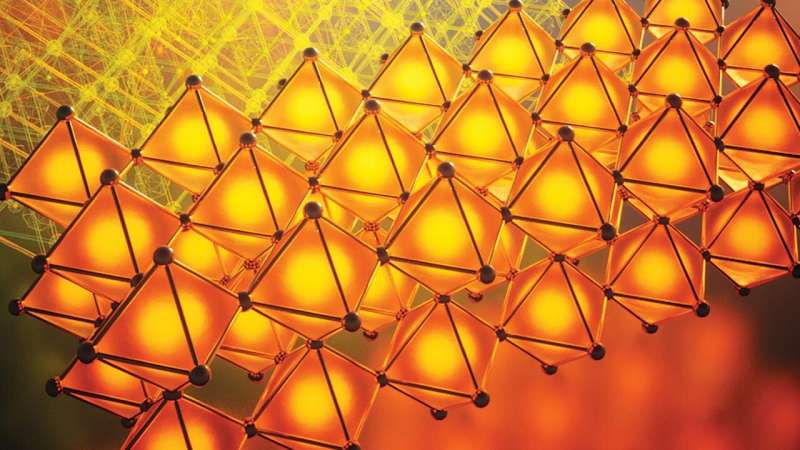Using machine learning to find reliable and low-cost solar cells
Researchers at the University of California, Davis College of Engineering are using machine learning to identify new materials for high-efficiency solar cells. Using high-throughput experiments and machine learning-based algorithms, they have found it is possible to forecast the materials’ dynamic behavior with very high accuracy, without the need to perform as many experiments.
The work is featured on the cover of the April issue of ACS Energy Letters.
Hybrid perovskites are organic-inorganic molecules that have received a lot of attention over the past 10 years for their potential use in renewable energy, said Marina Leite, associate professor of materials science and engineering at UC Davis and senior author on the paper. Some are comparable in efficiency to silicon for making solar cells, but they are cheaper to make and lighter, potentially allowing a wide range of applications, including light-emitting devices.
A primary challenge in the field is that the perovskite devices tend to degrade way more readily than silicon when exposed to moisture, oxygen, light, heat, and voltage. The problem is to find which perovskites combine high-efficiency performance with resilience to environmental conditions.
Perovskites have a general structure of ABX3, where A is an organic (carbon-based) or inorganic group, B is lead or tin, and X is a halide (based on chlorine, iodine or fluorine or a combination). Therefore, “the number of possible chemical combinations alone is enormous”, Leite said. Further, they need to be assessed against multiple environmental conditions, alone and in combination, which results in a hyperparameter space that cannot be explored using conventional trial-and-error methods.
“The chemical parameter space is enormous,” Leite said. “To test them all would be very time consuming and tedious.”
High throughput experiments and machine learning
As a first and key step towards solving thesechallenges, Leite and graduate students Meghna Srivastava and Abigail Hering decide to test whether machine learning algorithms could be effective when testing and predicting the effects of moisture on material degradation.
Srivastava and Hering built an automated, high-throughput system to measure the photoluminescence efficiency of five different perovskite films against the conditions of summer days in Sacramento. They were able to collect over 7,000 measurements in a week, accumulating enough data for a reliable training set.
They used this data to train three different machine learning algorithms: a linear regression model, a neural network and a statistical model called SARIMAX. They compared the predictions of the models to physical results measured in the lab. The SARIMAX model showed best performance with a 90 percent match to observed results during a window of 50-plus hours.
“These results demonstrate that we can make use of machine learning in identifying candidate materials and suitable conditions to prevent degradation in perovskites,” Leite said. Next steps will be to expand the experiments to quantify combinations of multiple environmental factors.
The perovskite film itself is only a part of a complete photovoltaic cell, Leite said. The same machine learning approach could also be used to forecast the behavior of a complete device.
“Our paradigm is unique, and I am eager to see the upcoming measurements. Moreover, I am very proud of the students’ diligence during the pandemic” Leite said.
Additional authors on the paper are Yu An and Juan-Pablo Correa-Baena, both from Georgia Tech.
More information:
Meghna Srivastava et al, Machine Learning Enables Prediction of Halide Perovskites’ Optical Behavior with >90% Accuracy, ACS Energy Letters (2023). DOI: 10.1021/acsenergylett.2c02555
Antonio Abate et al, Energy Spotlight, ACS Energy Letters (2023). DOI: 10.1021/acsenergylett.3c00593
UC Davis
Citation:
Using machine learning to find reliable and low-cost solar cells (2023, April 18)
retrieved 18 April 2023
from https://techxplore.com/news/2023-04-machine-reliable-low-cost-solar-cells.html
This document is subject to copyright. Apart from any fair dealing for the purpose of private study or research, no
part may be reproduced without the written permission. The content is provided for information purposes only.

Comments are closed